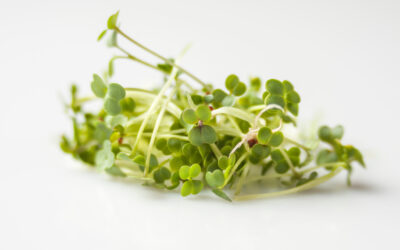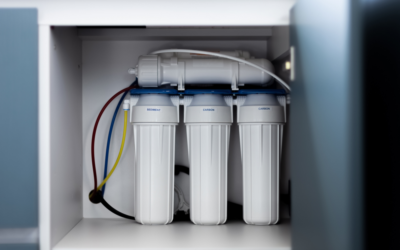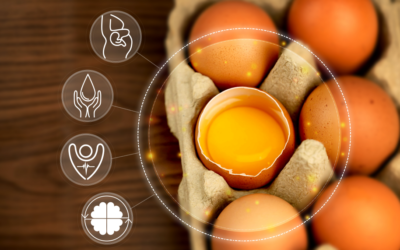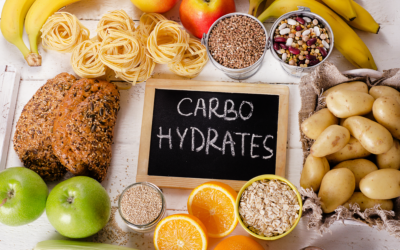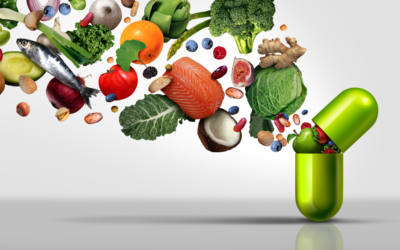Sprouting Goodness: A Step-by-Step Guide to Growing Broccoli Sprouts
Broccoli sprouts are miniature nutritional powerhouses that pack a punch of health benefits. Bursting with vitamins, minerals, and antioxidants, these tiny green sprouts are known to have 10-100 times more nutrients than their mature counterparts. Growing your own broccoli sprouts at home is a rewarding and cost-effective way to add a little spice to a salad or sandwich and boost your well-being. In this article, we will guide you through the simple steps of sprouting broccoli seeds, allowing you to enjoy a fresh and nutrient-dense addition to your meals.
Step 1: Gather the Materials to Grow Your Broccoli Sprouts
To get started, you will need a few basic supplies:
- Broccoli seeds: Look for organic, non-GMO broccoli seeds, which are easily available at health food stores or online.
- A wide-mouthed mason jar or sprouting tray: Choose a jar or tray that allows for adequate airflow and drainage. I personally prefer the jars as they take up less space on the counter and I have heard from others that the trays are hard to keep clean.
- Cheesecloth or mesh screen: This will help strain the water during rinsing while preventing the seeds from escaping.
- Water: Make sure you have a reliable source of clean water for rinsing the sprouts.
Step 2: Prepare the Seeds
Measure out approximately two tablespoons of broccoli seeds. Rinse them thoroughly under cool water to remove any debris or dust. Place the seeds in a clean jar or sprouting tray, ensuring there is enough space for the seeds to expand and grow.
Step 3: Soak the Seeds
Fill the jar or tray with water, covering the seeds entirely. Allow the seeds to soak for 8-12 hours, preferably overnight. Soaking the seeds initiates the germination process and softens the outer seed coat.

Step 4: Drain and Rinse
After the soaking period, drain the water from the jar or sprouting tray. Rinse the seeds under cool water and drain again. This step helps remove any residual compounds and encourages a clean growing environment for the sprouts.

Step 5: Begin the Sprouting Process
Place the rinsed seeds in the jar or sprouting tray and cover the top with a cheesecloth or mesh screen. This allows for proper airflow and prevents dust or insects from contaminating the sprouts. Position the jar or tray at an angle, allowing excess water to drain out and air to circulate.

Step 6: Rinse and Drain
Over the next few days, you will need to rinse the sprouts twice a day, ideally in the morning and evening. To do this, fill the jar or tray with water, swish it around gently, and drain off the excess water. Ensure that the sprouts have enough moisture without sitting in a pool of water, as this may lead to mold formation.

Step 7: Observe Growth
As you continue to rinse and drain the sprouts, you will notice tiny green shoots emerging from the seeds within a couple of days. Keep them in a well-ventilated area, away from direct sunlight. Ensure the sprouts are not overcrowded, as they need space to grow.

Step 8: Harvest
After approximately 5-7 days, your broccoli sprouts will be ready for harvest. At this stage, the sprouts should have developed two small leaves. Rinse them one final time to remove any hulls or loose seeds. Gently pat the sprouts dry with a clean paper towel or use a salad spinner.

Step 9: Removing “unsprouted” seeds
This step isn’t absolutely necessary, however, to avoid getting little brown seeds stuck in your teeth, I recommend removing them. Start by moving your seeds from the jar to a large bowl. Fill the bowl with room temperature clean water. Use your fingers to separate the staulks. The seeds will float to the top. Put your hand in the water and hold the staulks down. Tip the bowl to dump out the water with the seeds.


Step 10: Drying the Broccoli Sprouts
Place the clean staulks in a salad spinner to remove excess water


Step 11: Storage and Enjoyment
Once dry, transfer the sprouts to a clean, airtight container or a plastic bag with a few holes for air circulation. Store them in the refrigerator, where they will remain fresh for up to a week.

Disclosure: This post contains affiliate links.
Maple Roasted Salmon Recipe
Maple Roasted Salmon Maple Roasted Salmon is so delicious and easy to make. We are sure you’ll want to add this recipe to your menu plan each week. Searing salmon in a pan before baking it in the oven helps to lock in juices and flavor. Why is salmon so good for the...
Health Benefits of Broccoli Sprouts
Broccoli Sprouts Broccoli sprouts may be small in size, but they pack a powerful punch when it comes to health benefits. These tiny sprouts are loaded with nutrients and antioxidants that can help protect against a range of health issues, from cancer to heart disease....
Is Reverse Osmosis Water Filtration Better For You?
Water is essential for life, but not all water is created equal. Tap water can contain harmful contaminants and chemicals that can have adverse effects on our health. This is where reverse osmosis water purification comes in. Reverse osmosis (RO) is a highly effective...
Health Benefits of Omega 3 Fatty Acids
Health Benefits of Omega-3 Fatty Acids and Recommended Foods Omega-3 fatty acids are an integral part of cell membrane phospholipids. They provide structure, act as a barrier to protect cells from environmental aggression, and influence various bodily functions to...
Health Benefits of Daily Sunlight
Health Benefits of Daily Sunlight There are two sides to every coin—and two stories to tell about sunlight. Skincare enthusiasts and specialists, it seems, have taken a definitive stand against the sun, branding it as a villain that causes premature aging and leads to...
Benefits and Harms of Dietary Fat
Fat is one of three macronutrients found in food that is essential for cell survival in humans. However, it is often demonized as being “unhealthy”. But that couldn’t be further from the truth. Some fats have been linked to improved cognition and decreasing the risk...
Protein Improves Brain Health
Studies have shown that diets high in animal protein may help to prevent neurological conditions such as Alzheimer's disease and Parkinson's disease. Furthermore, there is a growing body of evidence that animal protein might be the key that unlocks the door to health...
Protein: Essential to brain health and repair
Protein, often referred to as the “building blocks of life” is arguably the most critical macronutrient for brain health and repair and disease prevention as we age. One of three macronutrients found in food the body is primarily composed of protein (second only to...
Simple versus Complex Carbohydrates
Carbohydrates are one of the three macronutrients that make up the foundation of our diet, along with protein and fat. They are found in a wide variety of foods, from fruits and vegetables to bread and pasta. Despite their importance in our diet, carbohydrates have...
Brain Health and Recovery: Food IS Medicine
Brain Health and Recovery: Food IS Medicine Food can be an excellent tool to enhance brain health and recovery. However, if you thought the brain was a complicated system to understand, the data on nutrition is far more complicated. So, spoiler, there is no “perfect...



